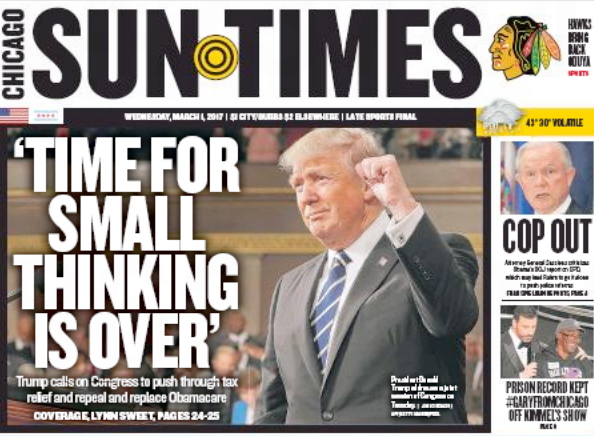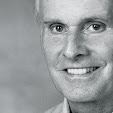[The body of this piece was uploaded on election eve before the outcome began to take shape. Trump's name was added next day. It could have been Clinton's - makes no difference!]
Finally it’s over. The presidential election of 2016 is history. Big sigh of relief. But not for long, because voter disgust with both candidates is so widespread that the aftermath of the election may be as tumultuous as the run-up to it.
 |
| Well, here's how it turned out. Added Nov 9. But for our purposes here, it matters not who won. |
That said, America on November 9 will have at least a brief moment to pause and reflect on what’s gone so horrendously wrong with our rigged and money-driven system of political discourse and then ask how (and if) what’s broken can be fixed.
It's amazing that no one is asking this question. No one. Obsessed with partisan concerns, the shrewdest political heads in America have lost sight of both the cause
and the remedy for our political ills.
So it's time to pull our heads out of the sand, ask this critical question, answer it correctly, and then find ways to create a political discourse system that gets governments working again.
The first step towards the restoration of functionality to American politics is general agreement on the nature of our
existing political discourse system and why it is failing us so disastrously at local, state and national levels.
The following nine points are my best effort at a non-partisan account of this system and its shortcomings.
1. Our existing political discourse system is
election-centered. Its focus at all levels of government is on politicians, political campaigns and election outcomes. It is a system of news and commentary, conventions and debates, political polls, and election-time political advertising.
2. From a formal standpoint, this system is
media-based, with network and cable TV still the dominant media for broadcasting the interactions of candidates and voters despite the rise of the Internet. That said, the top-down character of this system, which is owned by a handful of media corporations, is being challenged by the bottom-up citizen use of social media like Twitter and Facebook.
3. Polls confirm that Americans have
lost faith and trust in the existing system because it leaves them voiceless in the government decisions that affect their lives. They are aware that
citizen input has been displaced by the televised political attack ads that have skewed and determined American election outcomes at local, state and national levels since the advent of network TV in the 1960’s.
4. Political
attack ads weaken political discourse in three distinct ways. They alienate voters from government, they polarize voters into hostile extremes of right and left and - most important - they deprive citizens of their right to an informed voice in the political and government decisions that affect their lives.
5. The existing election-centered system is financially
underwritten by negative political advertising airing on commercial television. Attack ads are a profit center for the stations that air them. These ads now dominate
news coverage of politics in three ways: in news stories about the billions of dollars raised by candidates for office, in news stories about the actual content of attack ads and in news stories about resulting and escalating personal attacks of candidates on each other.
6. To pay for political attack ads, incumbents must to
spend up to 25% of their tax-payer paid work week raising money.
7. America’s election-centered political discourse system primarily
serves the financial and political interests of three groups: incumbents and political parties, “Big Money” political donors and the owners of TV networks.
8. Decades of
campaign finance reform efforts have failed utterly to restore functionality to this broken system.
9. This system, for all its flaws, is
indispensable to government. At this critical juncture in its history, however, America urgently needs political discourse that listens to the people and uses citizen input to get governments working again at local, state and national levels.
If these nine points strike a chord, let's move on to how to America can restore functionality to its political discourse.
FIRST STEPS:
1.
Do not attempt to fix the existing election-centered political discourse system. This market-driven system will fix itself in time as Americans abandon it in favor of a political discourse system that listens to them and values their input in the search to understand and solve any and all of the problems that confront communities of any size.
2. Instead,
create compelling alternatives to the existing system, systems that do precisely what the existing election system is not doing. Create a political discourse system that
depolarizes us. One that get us listening to each other. Create an issue-centered, problem-solving, citizen-participatory political discourse system that gives citizens a
direct, ongoing and informed voice in the political decisions that affect their lives.
3. Significantly,
anyone - any individual, institution or medium - can design such a system, and can do so at local, state and national levels. The possibilities are unlimited. High school students can create one. What follows are my personal desiderata for an issue-centered political discourse system.
GENERAL PRINCIPLES
4. Let this issue centered system focus on matters of concern to
all members of a given community: on the definition and solution of the most
intractable problems and the discovery and implementation of the most
promising opportunities.
5. Let it have two features in common with our election-centered system: let it be
media-based and
voter driven.
America's Choice shows how prime-time, voter-driven television can help communities solve problems and realize opportunities. It is modeled on voter-driven reality TV shows like American Idol and The Voice.
6. Let it be of, by and for the American people. Let it give all Americans an
ongoing and informed voice in the political and governmental decisions that affect their lives.
7. Let it be disseminated via a
mediating media dedicated itself to making citizens and governments
responsive and
accountable to each other in shaping the best futures of their communities.
8. Let it be as scrupulously and recognizably
rule-governed as the televised sports contests in which Americans the trust and confidence that is absent from our election-driven political discourse system.
9. Let the rules that govern this system create environments in which participants and spectators alike are rewarded for talking
with each other as opposed to talking
about each other.
10. Let it be
scalable in ways that make it familiar to all Americans in all three communities - local, state and national - of which every American is a member.
11. Let its programs and formats, published and aired in all media, be
ongoing, prime time, front page and year-round.
FINANCE AND GOVERNANCE
12. Let it be sufficiently compelling and transformative (as TV executives like to say) to effectively tap the
Market of the Whole of all members of a given community.
13. Let this system be substantially but by no means entirely
market driven in order to attract advertisers eager to tap the markets it serves: the Market of the Whole of all members of a given community.
14. Let its transformative content strive to
depolarize and find common ground between groups that our existing election-driven system has tended to polarize: young and old, rich and poor, male and female, religious and atheist, white and black, gay and straight, employed and unemployed, immigrant and native-born, educated and uneducated.
15. Let this system give media maximum
freedom to create programs and formats that meet a given medium’s target audience.
16. Let its voter-driven outcomes be purely
advisory and
non-binding to elected leaders.
17. Let the
governance of this system be sufficiently transparent, rigorous and diverse to keep it from being co-opted by any single entity or group of entities.
That’s it for now. I have return to my day job. Whatever the merits of these ideas, America needs something entirely new – better, smarter ways of doing politics and government - than what it has now. The nation's future is at stake. Thanks for reading. Feedback appreciated.













